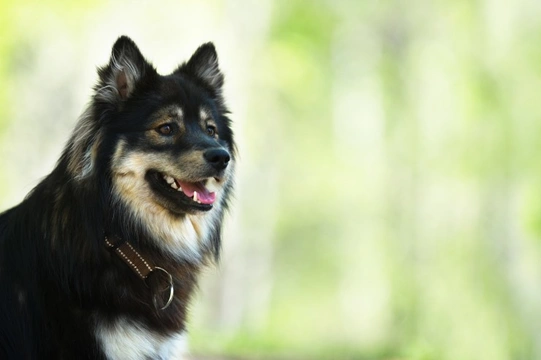
Pompe’s disease or glycogen storage disease type II DNA testing for the Finnish Lapphund
The Finnish Lapphund is one of the most uncommon and unusual dog breeds in the UK – so much so that they fall right down in the 230th place position out of a total of 244 different dog breeds and types.
Whilst Finnish Lapphunds are a reasonably uncommon sight in the UK, the breed remains popular in their home country of Finland and neighbouring countries, where dogs of the breed were originally bred as hunting and guarding dogs, which is reflected by their inclusion in the Kennel Club’s pastoral dog group.
The Finnish Lapphund is a medium sized dog of the spitz type, which is a very versatile dog that can be used for all manner of working roles, and that also tends to do well at canine sports. Finnish Lapphunds are a very high energy dog breed that is matched by incredibly high intelligence too, which means that these dogs can achieve a lot with the right type of owners – but that they can be a challenge to manage for people who are not experienced with dogs, or who can’t accommodate for the dog’s need for exercise and stimulation.
Finnish Lapphunds are hardy and robust dogs that live for an average lifespan of between around 12-14 years, but there are quite a few hereditary health issues recognised within dogs of the breed, which can affect the quality and life as well as the longevity of affected dogs, and also have sometimes onerous care requirements for their owners.
One hereditary health condition that can be found in dogs of the Finnish Lapphund breed is called Pompe’s disease, or glycogen storage disease type II, and this is a type of enzyme deficiency that can cause a number of muscular and skeletal issues to develop in affected dogs.
Because Pompe’s disease is an inherited health condition, it is passed on from parent dogs to their young by means of heredity. This means that in order to ensure that the condition isn’t passed on to subsequent generations of dogs, only healthy dogs should be used within breeding programmes – and the only way to find out the status of any given dog prior to breeding is by DNA testing them for the markers of the disease.
In this article we will look at Pompe’s disease or glycogen storage disease type II in the Finnish Lapphund in more detail, explaining the basics of the condition, its mode of heredity, and how to get a Finnish Lapphund DNA tested to find out their status. Read on to learn more about Finnish Lapphund glycogen storage disease type II or Pompe’s disease.
What is Pompe’s disease or glycogen storage disease type II?
Pompe’s disease is also known as glycogen storage disease type II, and you may hear your vet use the two terms interchangeably.
Pompe’s disease is a type of glycogen storage issue that develops due to a deficiency of a certain enzyme, which results in the accumulation of too much glycogen in the body’s cells. This in turn leads to abnormal glucose readings in the dog’s body tissues, including the smooth muscle, skeletal system, and cardiac system.
Finnish Lapphunds with Pompe’s disease display a range of symptoms including a progressive weakening of the muscles, intolerance for physical exertion, and cardiac problems. They may also vomit or regurgitate food frequently too.
Generally, Pompe’s disease in the Finnish Lapphund begins to display symptoms in dogs of around 6-8 months of age, and progresses and worsens relatively quickly. Few affected dogs live past their second birthdays.
How do Finnish Lapphunds inherit Pompe’s disease?
Pompe’s disease is a hereditary health condition, which means that the genes that any given dog inherits from their parents determines their own status. Finnish Lapphund Pompe’s disease is an autosomal recessive health condition, which means that the combined genes from both sides of the dog’s parentage dictates their ultimate status.
Dogs may be either clear of, affected by or a carrier of Pompe’s disease, and when you know the status of any two parent dogs, you can work out the status their litter will have as follows:
- Two affected dogs will have an affected litter.
- Two clear dogs will have a clear litter.
- Two carriers will produce a litter within which each pup has a 50% chance of being a carrier, 25% chance of being affected, and a 25% chance of being clear.
- Breeding an affected dog with a clear dog will produce a litter of carriers.
- Breeding an affected dog with a carrier will produce a litter within which each pup has a 50% chance of being affected, and a 50% chance of being a carrier.
- Breeding a clear dog with a carrier will produce a litter within which each pup has a 50% chance of being clear, and a 50% chance of being a carrier.
Getting a Finnish Lapphund DNA tested for the markers of Pompe’s disease to find out their status
In order to find out the status of any Finnish Lapphund for Pompe’s disease, you can ask your vet to take a DNA sample from the dog, which can then be sent off to an approved UK-base laboratory for testing. The lab then returns a result of the dog’s status to their owner.
Don’t forget that if you intend to use this information as the basis of a breeding programme, both dogs within the mating match must be tested, as this is the only way to definitively predict the eventual status of their litter.



